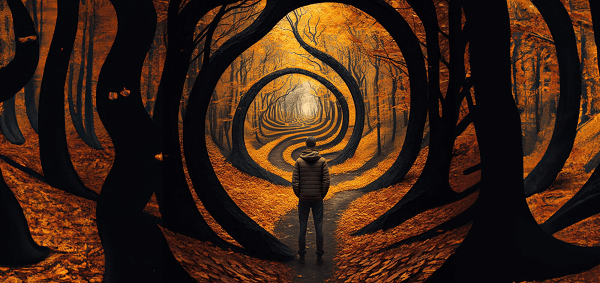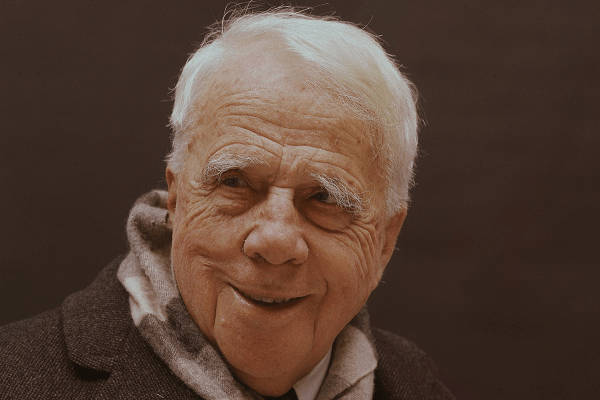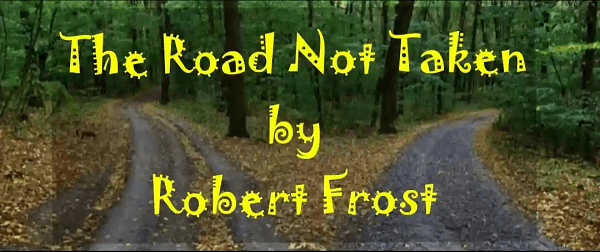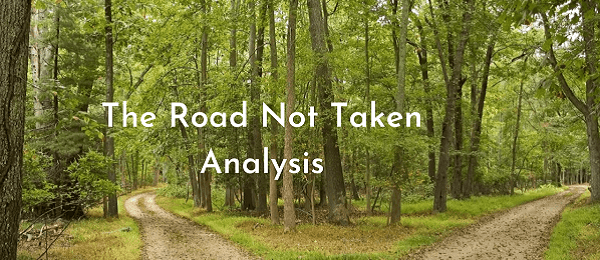The Road Not Taken Poem Summary and AnalysisIntroductionThe road serves as a metaphor for our lives in the poem "The Road Not Taken." The poet claims that the path we don't take is the one we choose not to take. He discusses his opinions on the choices he's made in the past. Our fate and final destination are determined by the path we choose. The key point the poet wishes to make is that, even if we come to regret our decisions, there is nothing we can do to go back and change our minds. As a result, we must use discretion while selecting choices. 
About the AuthorAn enduring poem by American poet Robert Frost is titled "The Road not taken." He served as America's Poet Laureate. The first Poem in Robert Frost's 1916 book Mountain Interval, The Road Not Taken, is one of several poems in the collection. In this Poem, the poet expresses his decision to take a particular course. 
The Theme of the PoemThe circumstances of a person in his life, when he finds it challenging to choose between right and wrong, is described in The Road Not Taken. The complexity of existence is discussed, as well as how initially, its methods seem incorrect. The Poem's central message is making the proper choices when the moment is right. It provides an insightful perspective on decision-making. The traveler encounters a route that split in two, and he is faced with the decision of which way to choose. This has a profound message that's hidden underneath. It implies that sometimes we have to make life decisions without completely comprehending the situation. But it's also important to go through all of your alternatives and choose wisely. The decision we make at a turning point determines and alters the course of our life. As a result, the Poem emphasizes the importance of thoroughly analyzing the issue before making a choice. SummaryThe speaker informs his audience, two paths go through the woods. He continues by pointing out that the wood is yellow because it is fall (autumn season), and the trees are shedding their leaves. He expresses sadness that he couldn't take both ways at once. For a while, he waits at the fork in the road as he considers which direction to go. As far as his vision would allow, he peered down one of the streets. Only up to the curve in the dense bush was he able to see the route. The undergrowth in this scene stands in for life's uncertainties, while the highways reflect the choices and judgments we make in life. The poet is at a crossroads, wanting to look deeper into the future but being constrained by the need to make a careful decision, which prevents him from doing so. The speaker then decides to follow the other road because they appear to be comparable. We presume the roads are visually comparable, as he claims they are "just as fair." Due to the fact that both options are excellent, the roads are likewise excellent. He further defends his decision by pointing out that it is a grassy route that few travelers use. 
So, it was necessary to use and utilize this road until it was worn out. After more reflection, the poet concludes that both pathways appear less traveled. The poet is once again conveying his uncertainty when deciding between two options. Because all paths appear to be comparable, he feels unsure about making a choice. Later, the speaker remarks, "The road seems equal, but there is a difference." He informs us in a novel way that no traveler has traveled the path and that both roads appear to be covered with leaves. Because the footfall does not discolor the trampled-up leaves and instead remains undisturbed, he draws this conclusion. In this instance, the poet acknowledges that nothing has changed and that the confused state still exists. The poet quickly regretted his choice after that. Since he already knew what was on his path, he strongly believed that he would take the other route to find out what was there. It stands for the idea that while we often second-guess our decisions in life, turning back the hands of time is not always possible. His realization that he might never be able to go back and take the Road Not Taken is the result. He recognizes that we may encounter several routes and make new options and choices throughout the course of our lives. Starting over might not be possible, especially as we get older. Later, the poet plans to discuss the choice he made. He may be upset, glad, or reflective as he considers it, but he believes that whatever his feelings may be regarding the choice, it will undoubtedly change his life. He claims once again to be uncertain about the future. But when he later discusses his choice, he does so with assurance, stating that he was forced to go in the direction that many others might have chosen. This shows that the speaker was also daring and had independent thought, but the last few lines convey the idea that the decision he made unquestionably had a big impact on his life. AnalysisThe Road Not Taken is an ambiguous poem that invites the reader to consider life decisions, such as whether to follow the crowd or strike out on their own. This Poem emphasizes the points in life when choices must be taken if life is a journey. Where are you going to go? 
The ambiguity stems from the dispute over free will vs. determinism, which raises the question of whether the speaker in the Poem intentionally picks the route that diverges from the norm or doesn't like the road with the bend in it. Therefore, he is influenced by outside forces. Robert Frost created this Poem to emphasize and make fun of his English-Welsh poet buddy, Edward Thomas, who frequently regretted not choosing a better route while the two of them were out strolling in England. Frost found this quaintly lovely when Thomas would sigh about possible sights and activities they had engaged in. In other words, despite the fact that it was unknown, Frost's companion regretted not choosing the route that may have presented the finest prospects. Frost enjoyed making people laugh and making them feel uncomfortable. No matter whatever path you choose, you'll always look back and wish you'd followed another," he informed Thomas. Therefore, it's ironic that Frost intended the poem to be somewhat jovial but that it came off as anything but. It is taken seriously by everyone. The great poet is one who can take such commonplace realities?in this example, a friend's sighs during a country walk?and turn them into something that is so much more. What didn't happen is the main theme of "The Road Not Taken": when faced with a significant choice, this individual went with what was least popular and presented with the most opposition. He gave up one for the other since he knew he would only travel down one path and was sorry he couldn't take both. The speaker's emotional condition at the conclusion is ultimately left up to the reader to determine. Was it a wise decision to take the route less traveled? Despite the fact that it "made all the difference," Frost does not elaborate on the alteration. Robert Frost's poetry is all collected in one amazing book called The Collected Poetry, and I use it as the foundation for all of my research. Along with other things, it has all of his classic masterpieces. It is the most comprehensive collection currently on hand. ConclusionThe poet discusses our everyday confusion. He describes how he stopped at a point of divergence while passing through a golden wood one day. Because both roads appeared to be similar but distinct, he was still determining which one to go. Ultimately, he went down the second route, which appeared less traveled.
Next TopicSilas Marner Summary
|
 For Videos Join Our Youtube Channel: Join Now
For Videos Join Our Youtube Channel: Join Now
Feedback
- Send your Feedback to [email protected]
Help Others, Please Share









